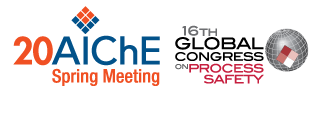

Unfortunately, significant incidents resulting in fatalities, injuries, environmental damage, and property loss have continued over the last thirty years. The refinery fire and explosion in Texas City, Texas (2005), the offshore rig fire, explosion, and oil spill in the Gulf of Mexico (2010), and the toxic chemical release in LaPorte, Texas (2014) are grim reminders that global process safety improvement efforts have yet to achieve the goal of preventing or minimizing the consequences of catastrophic releases of toxic, reactive, flammable or explosive chemicals.
Many employees entering the industrial workforce today are unaware of how behaviors cultivated in a production environment can inadvertently undermine the performance of a process safety program as they did in 1989 and continue to do so today. Recognizing and changing such behaviors requires understanding not only what happened, but more importantly how and why incidents like this explosion occurred. This level of understanding makes it possible to apply experience from the past to the systems we control today.
This paper describes the operating process, its complexities, and the maintenance activity which resulted in the explosion. Since the incident findings from the 1989 explosion apply today, this paper explores behaviors in today's plants which have and could ultimately lead to more incidents if not recognized and addressed proactively.
A common issue between 1989 and today explored in this paper is the administrative control for managing maintenance-related workaround procedures on existing engineering designs. Lessons learned then that apply now include the following: adhering to safe work practices; complying with standards, policies, and regulations; managing the removal of or disabling of safeguards; and strong operational discipline across the organization (in this case, by personnel operating and maintaining the equipment).
If we are to reduce injuries, fatalities, environmental harm, and property damage, we must continue to remind ourselves why we must keep constant vigilance on our process safety risk reduction efforts each and every day.
Presenter(s)
Language
Pricing
Individuals
| AIChE Member Credits | 0.5 |
| AIChE Pro Members | $19.00 |
| Employees of CCPS Member Companies | Free |
| AIChE Graduate Student Members | Free |
| AIChE Undergraduate Student Members | Free |
| AIChE Explorer Members | $29.00 |
| Non-Members | $29.00 |
